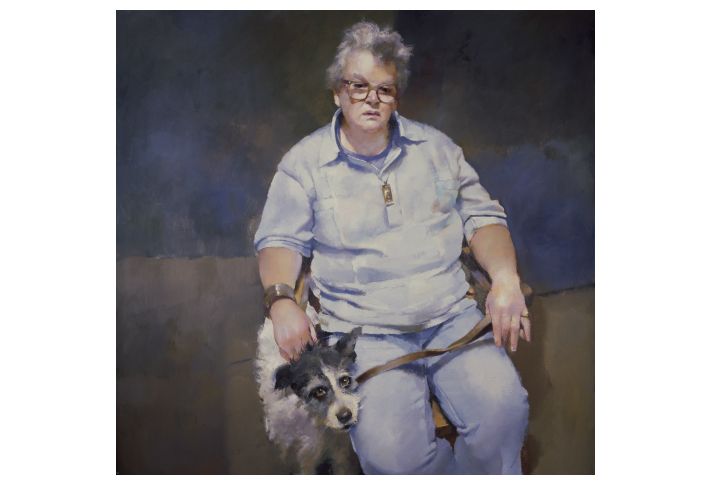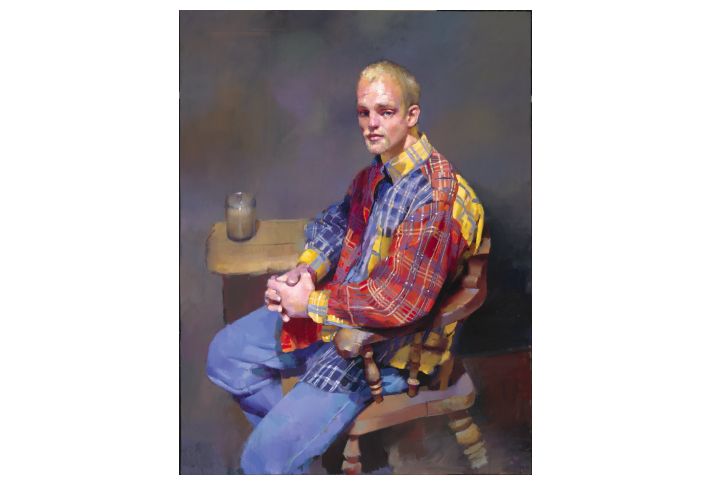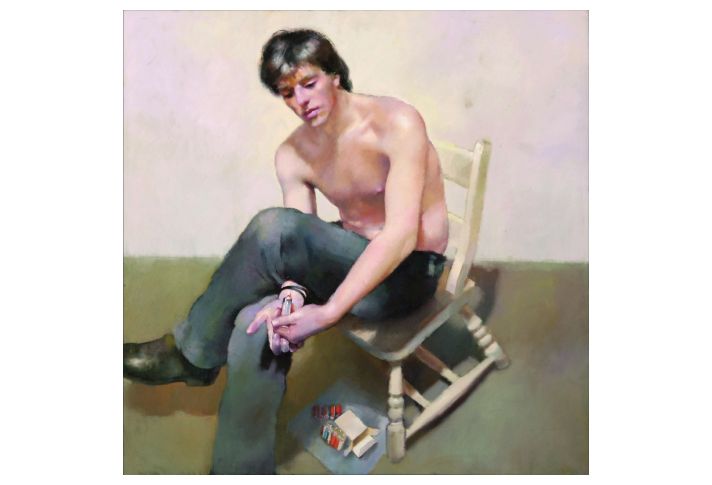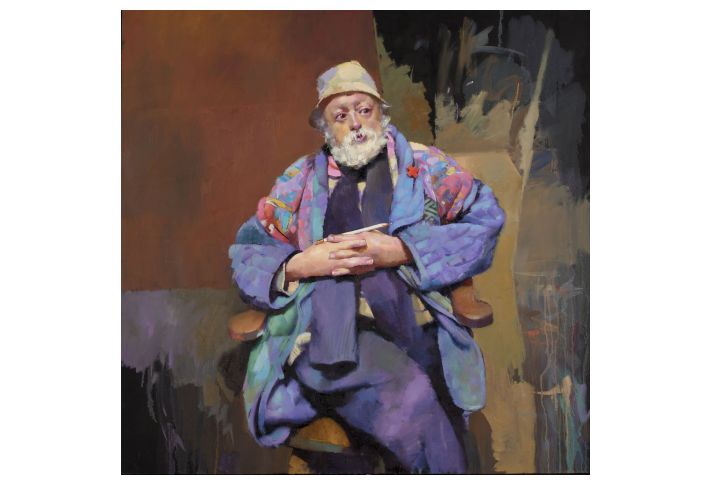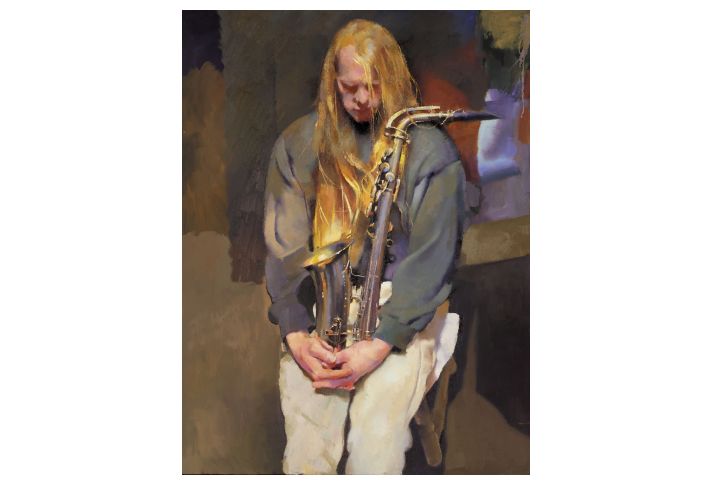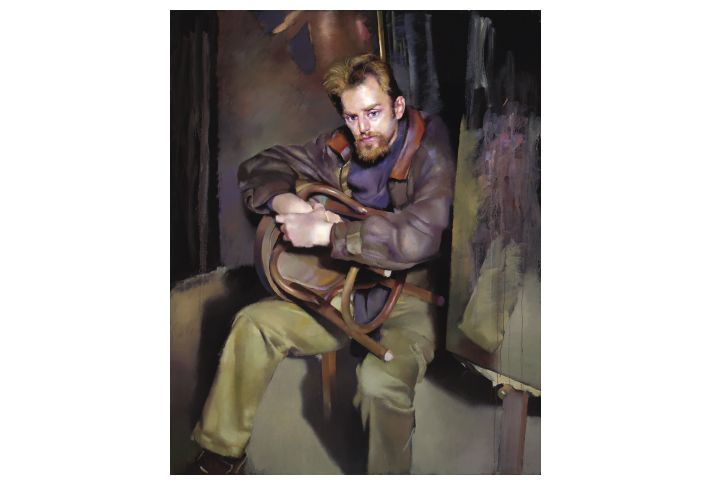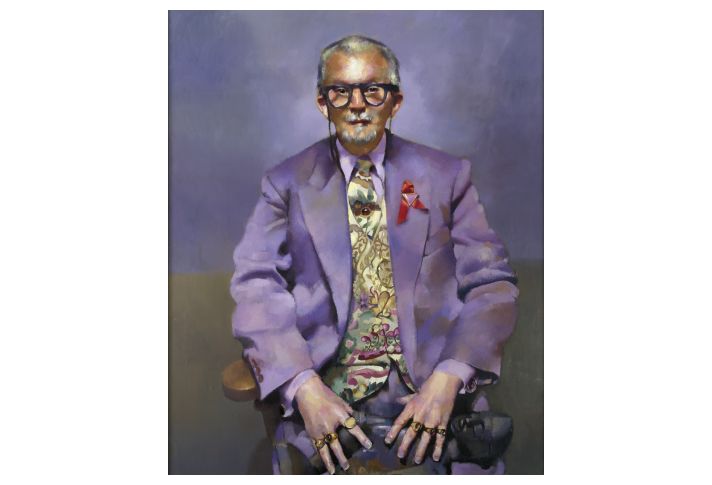In the year after the Landscape Project, Lenkiewicz returned to the theme of vagrancy, restoring and reworking a number of works on sailcloth dating from the original Project. However, new images were added of the vagrant Les ‘Cider’ Ryder, last of the ‘Cowboys’ to have survived the ravages of alcoholism. It was Les Ryder, therefore, who arrived in a limousine as guest of honour, to be greeted by a throng of several hundred people waiting to view Lenkiewicz’s 1997 Retrospective at Plymouth City Museum and Art Gallery. The exhibition was opened by former peace envoy and hostage Terry Waite, CBE. It seemed that Lenkiewicz, after thirty years of being regarded by the establishment in his adoptive city as a professional irritant, was now becoming respectable: an honorary degree from the University of Plymouth followed.
Lenkiewicz, despite his failing health, pressed on with his twentieth Project, called Addictive Behaviour, intended as a summing up of his observations on addictive processes underlying the human condition. According to the notes for the 1997 Retrospective the artist planned eight sections for the Project:
Section one will deal with conventionally recognised addictive scenarios, alcohol, drugs, gambling and eating disorders. Section two will represent the largest single addictive scenario experienced by the human race, cross culturally and at all ages - falling in love. This section will be the hub of the wheel of addictions. Section three will deal with theological persuasions. There are over 800 versions of Jesus culture in England alone, a considerable proportion of them in the South West. The fourth section will deal with social and political convictions, “I’ve voted Tory/Labour all my life” etc. Section five will look at the concept of the family, “I love my little Billy, but he’d better not play with dirty Johnny down the road.” Children as property etc. Section six will look at the vast and cross-referential eccentricities of addictions and obsessive behaviours, from self-mutilation to collecting hosiery. Attitudes towards cars, houses, gardens, and other ‘collecting’ behaviours. Section seven will deal with creativity in relation to addiction. “I’m a writer/poet/painter/actor/dancer” etc. Finally, Lenkiewicz will conclude with section eight on Bibliomania. The scope of the Project called for 800 sitters, each of whom would be asked to write 1000 words about their predilections or thoughts on addictive behaviour, using a similar formula to the Education Project.
By means of this project Lenkiewicz hopes to get closer to the physiological essentials that may cause ‘fanatical belief system’ behaviour and to explain the impulse that many of us have to subjugate private thought for mass thought, private responsibility for mass responsibility. He does not think there is a more appropriate line of enquiry than to consider the reasons why individuals and groups of people experience such a high failure rate in getting on with each other. He observes: “the most commonplace and wide-ranging normal behaviours are likely to offer us a clue to the causes of more concentrated and extremist anti-social activity, one would have to be foolish indeed not to take the hint.”
Robert Oscar Lenkiewicz died of heart failure on 5 August 2002, aged sixty. Lenkiewicz left no epitaph or final words but the remarks he made on the stage of Plymouth Theatre Royal at an event called ‘An Evening with Lenkiewicz’ in 1996 will do as well as any:
It’s a clever trick, it is truly an art, to maintain the sensation that life is extraordinary and inexplicable, without a desire to hunt it down for truths, all of which will pass. And the feeling of enrichment, of feeling significant to oneself, without being too much of a public nuisance, is, I think, one of the profoundest tricks to learn in this extraordinary business of living.
However, almost thirty years earlier The Daily Telegraph Magazine of July 1973 summed up the artist’s life with a prescient cover caption:
THE ARTIST AS ENTERTAINER … PHILOSOPHER … AND SOCIAL CONSCIENCE
Plymouth’s Portrait Painter









